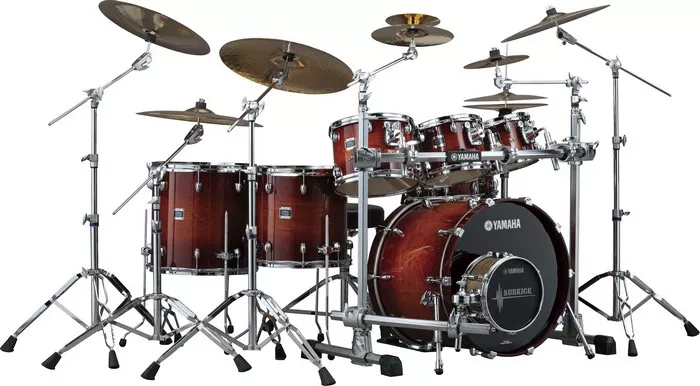The wooden tongue drum, a melodic percussion instrument with roots in ancient history, has been gaining popularity for its enchanting, ethereal sounds. Whether you’re an aspiring musician or just someone who appreciates the beauty of this unique instrument, learning to play the wooden tongue drum can be a rewarding and meditative experience. In this comprehensive guide, we will explore the basics of playing a wooden tongue drum, from understanding its construction to creating captivating melodies.
Understanding the Wooden Tongue Drum
Before we dive into the world of playing the wooden tongue drum, let’s begin by understanding the instrument itself. A wooden tongue drum, also known as a tank drum or slit drum, is a percussion instrument typically made from a hollowed-out wooden shell with several “tongues” or slits of varying lengths and sizes. These tongues are tuned to specific notes, creating a harmonious and melodic instrument.
Wooden tongue drums are known for their soothing, meditative tones, making them an excellent choice for both beginners and experienced musicians. The sound produced is reminiscent of the steel tongue drum but with a unique organic quality due to its wooden construction.
Choosing the Right Wooden Tongue Drum
If you’re new to playing the wooden tongue drum, selecting the right instrument is a crucial first step. Consider factors such as the number of tongues, the type of wood used, and the tuning. Tongue drums come in a variety of tunings, including diatonic, pentatonic, and chromatic, each offering different musical possibilities.
For beginners, a diatonic scale is often recommended because it is easy to understand and play, making it a great starting point. You can always explore other tunings as you become more proficient.
In terms of wood type, some common choices include bamboo, hardwoods like oak or mahogany, or exotic woods like padauk. Each wood type produces a distinct sound, so choose one that resonates with your preferences.
Playing Techniques
Playing the wooden tongue drum is a relatively simple and intuitive process. The most common technique involves striking the tongues with your fingers or mallets. Here are the steps to get you started:
1. Positioning: Place your wooden tongue drum on a flat and stable surface, like a table or your lap. Ensure it’s at a comfortable height, allowing you to reach the tongues easily.
2. Hand Position: When using your fingers, make a cupping shape with your hand, and strike the tongue’s center with the tip of your finger. The force and speed of your strike will affect the volume and tone.
3. Mallets: If you prefer using mallets, choose soft rubber mallets designed for tongue drums. Strike the tongues gently for a softer, more resonant sound or with more force for a sharper tone.
4. Experiment: Explore the different tongues and their respective notes. Experiment with varying strike techniques and strengths to discover the nuances of your wooden tongue drum.
5. Rhythmic Patterns: Once you’re comfortable with individual notes, try creating rhythmic patterns by combining different tongues. This is where the creative aspect of playing the wooden tongue drum truly shines.
Creating Mesmerizing Melodies
Now that you’ve mastered the basics, it’s time to delve into creating captivating melodies on your wooden tongue drum. Here are some tips to get you started:
1. Tune Familiar Songs: Start by trying to play familiar songs or melodies you enjoy. Begin with simple tunes, nursery rhymes, or folk songs. This will help you become more familiar with your instrument and develop your sense of pitch.
2. Practice Scales: Practice playing scales to improve your technique and develop a sense of the musical intervals between the notes. This will enable you to play more complex melodies.
3. Improvise: Let your creativity flow by experimenting with improvised melodies. Use your knowledge of scales and the harmonious nature of the wooden tongue drum to create your own unique tunes.
4. Record Yourself: Recording your playing sessions can be a valuable tool for improvement. It allows you to analyze your performance, identify areas for enhancement, and track your progress.
5. Collaborate: Playing with other musicians can be a rewarding experience. Wooden tongue drums complement various instruments, such as acoustic guitars, flutes, and handpans. Collaborative jam sessions can lead to beautiful, spontaneous compositions.
Maintaining Your Wooden Tongue Drum
To ensure your wooden tongue drum remains in optimal condition and continues producing beautiful melodies, follow these maintenance tips:
1. Cleaning: Regularly dust your drum with a soft cloth to remove any dirt or debris that may accumulate on the tongues.
2. Tuning: Over time, the tuning of your wooden tongue drum may shift slightly due to temperature and humidity changes. If you notice any tongues sounding off-key, consult with a professional for retuning.
3. Storage: When not in use, store your wooden tongue drum in a cool, dry place. Avoid exposing it to extreme temperatures or direct sunlight, as this can cause warping or damage to the wood.
See Also: Playing Drums on a Keyboard: A Beginner’s Guide
Conclusion
Playing a wooden tongue drum is an art that combines simplicity with captivating beauty. The meditative tones and ease of playing make it an ideal choice for both beginners and experienced musicians. By understanding the instrument, selecting the right drum, mastering basic techniques, and exploring the creative possibilities of the wooden tongue drum, you can unlock the melodic magic it has to offer. Whether you’re seeking a peaceful pastime or a unique addition to your musical repertoire, the wooden tongue drum is sure to delight and inspire. So, embark on your musical journey and let the enchanting melodies of the wooden tongue drum fill your life with harmony and serenity.


